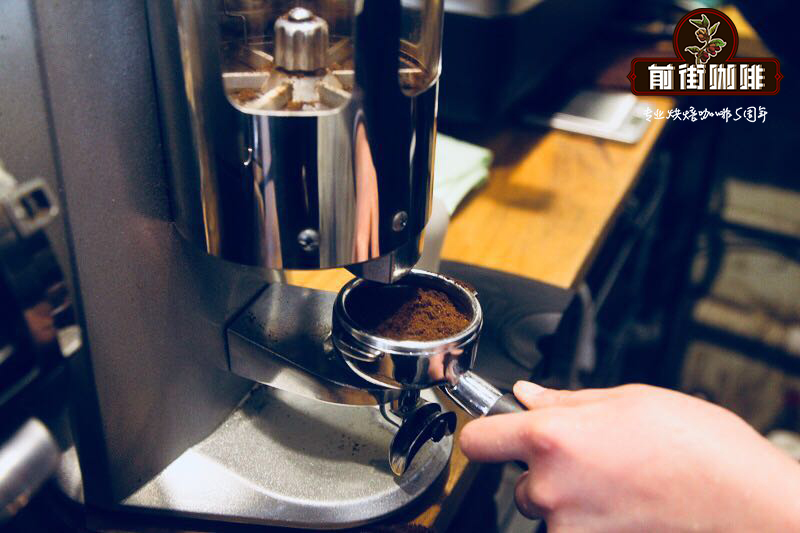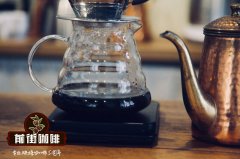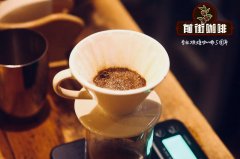If espresso changes the ratio of powder to water, does the extraction time also change? Espresso extraction ratio

Professional coffee knowledge exchange more coffee bean information please follow the coffee workshop (Wechat official account cafe_style)
The ratio of coffee powder to water is more practical than that of coffee powder in the experiment.
Would you like to ask about the powder-to-water ratio?
Suppose the usual double is extracted with 20 grams of powder and 60 grams
It takes 30 seconds for powder to compare to 1:3.
If I want to make powder / water ratio is 1:2
Also use 20 grams of powder, but extract 40 grams.
May I ask if I need to adjust the bean grinder more finely to maintain the extraction time for 30 seconds?
Or should the grinding bean scale remain the same and extract 40 grams and then stop the extraction directly?
I would like to ask whether the different powder-to-water ratio is the ideal time to be controlled at 25 Murray for 30 seconds?
Do you mean espresso? if so, according to my personal practice, no matter what the gouache ratio is, it will be based on 1 second 1ml first.
1 second 1ml is not necessarily the best taste, but it is relatively safe, not the best, but not too bad.
For example, if you extract 60ml with 20g powder for 30 seconds, in my way, I will directly adjust the thickness and fineness of the powder, and then reduce the powder count to around 17-18g and then extract the data.
When I get close to the data of 1 second 1ml, I will make a latte or try it directly to see the taste of espresso and then fine-tune the taste.
Most of the time, I will use this way, unless the condition of the coffee beans on that day is so confusing that the 1-second 1ml method will not work at all. I will use other methods (ex extremely concentrated extraction, powder adjusted to finer or thicker … Etc.)
The above for your reference, everyone's way is different, cooking their favorite taste is more important, after all, coffee is very subjective.
I'll stop as soon as I get 40 grams. I used to follow the advice of the textbook, extract at the same time, put a measuring cup for every 30 grams, and then understand the difference between the first 30 grams and the last 30 grams. The first 30 grams are indeed better as mentioned in the textbook.
You can try it for yourself.
Take a look at it, not all beans will follow this change.
You can think of time as how much coffee you want to dissolve. The longer it takes, the more it dissolves, and vice versa.
Note that as time goes by, the substance and proportion dissolved are different, so the taste will change.
Think of the amount of coffee as the concentration, the less, the thicker, and vice versa.
If the concentration is too high, it may not be easy for you to distinguish the taste.
To play espresso is to find out what you think tastes best in the combination of different amount of powder, time, and extraction.
There is no standard answer to your question.
In addition, using different amount of powder, the same extraction time and the same ratio of powder to water, the taste is also different.
This is because the powder is different in thickness.
Therefore, do not think that if the amount of powder is caught at an arbitrary fixed value, the extraction time and amount of extraction look reasonable, and there is no channel, it must be a successful and should be delicious espresso, but that if it is not good, it must be the bean.
There is a question as to whether this is related to the problem of overextraction.
For example, according to 1:2, espresso is extracted normally.
But most of them teach 18Mui 20g to get probably 60ml coffee liquid. Suppose crema is thinner and the coffee liquid weighs 50 grams.
Is the ratio of powder to water about 1: 2.5 considered excessive extraction?
Hand coffee filter cup is very knowledgeable! Flow rate data of several common coffee filter cups
Important Notice :
前街咖啡 FrontStreet Coffee has moved to new addredd:
FrontStreet Coffee Address: 315,Donghua East Road,GuangZhou
Tel:020 38364473
- Prev

Appreciate the variety and taste of individual coffee from all over the world.
Professional coffee knowledge exchange more coffee bean information please follow the coffee workshop (Wechat official account cafe_style) Yunnan coffee bean varieties Typica and Bourbon coffee tree is a genus of Rubiaceae in botany. Coffee trees are native to subtropical Africa and some islands in southern Asia. In the 16th and 17th centuries, through Venice
- Next

Practical parameters of gouache ratio of hand-brewed coffee the ratio of hand-brewed coffee powder to water at one time
Professional coffee knowledge exchange more coffee bean information please follow the coffee workshop (Wechat official account cafe_style) Coffee powder water is more practical than the experiment hand-brewed coffee powder ratio [heavy taste] 1 cup coffee grams than black coffee milliliters), that is, the golden cup standard 112.51Ze13.5 (beans weigh more milliliters than raw water) [moderate taste] 1 121 13 (that is, golden cup)
Related
- Beginners will see the "Coffee pull flower" guide!
- What is the difference between ice blog purified milk and ordinary milk coffee?
- Why is the Philippines the largest producer of crops in Liberia?
- For coffee extraction, should the fine powder be retained?
- How does extracted espresso fill pressed powder? How much strength does it take to press the powder?
- How to make jasmine cold extract coffee? Is the jasmine + latte good?
- Will this little toy really make the coffee taste better? How does Lily Drip affect coffee extraction?
- Will the action of slapping the filter cup also affect coffee extraction?
- What's the difference between powder-to-water ratio and powder-to-liquid ratio?
- What is the Ethiopian local species? What does it have to do with Heirloom native species?

